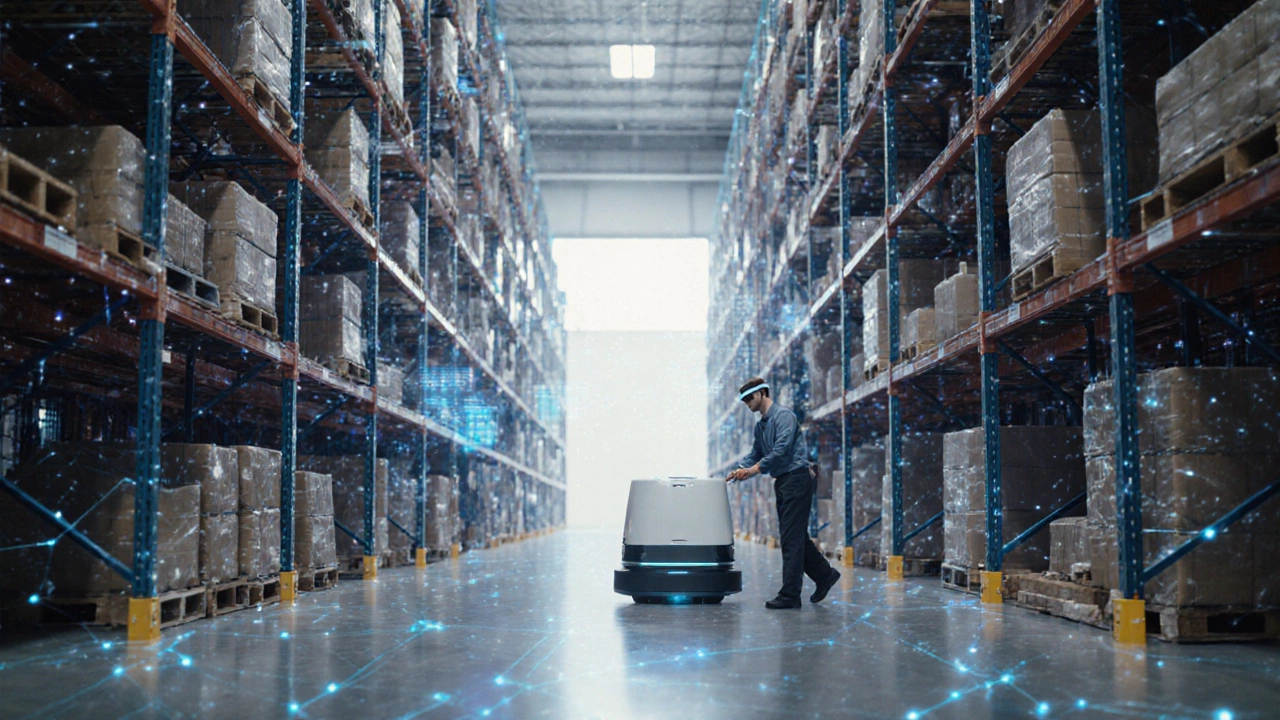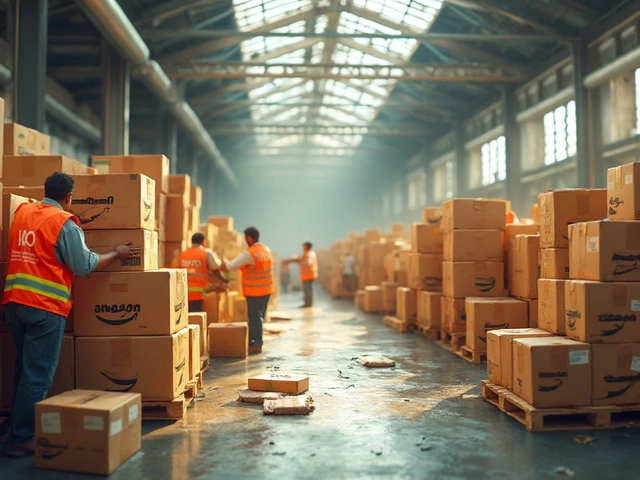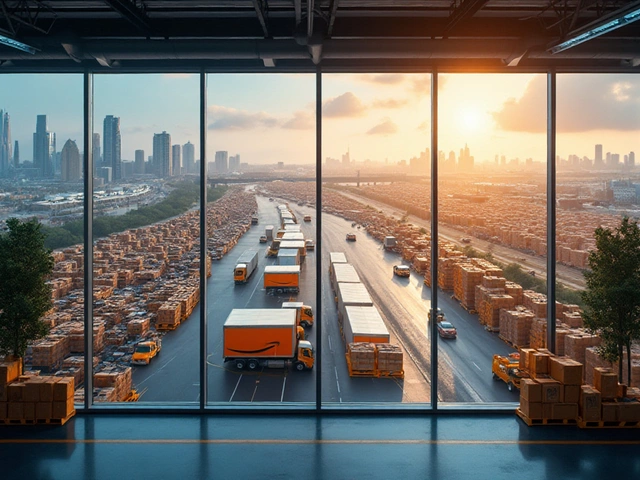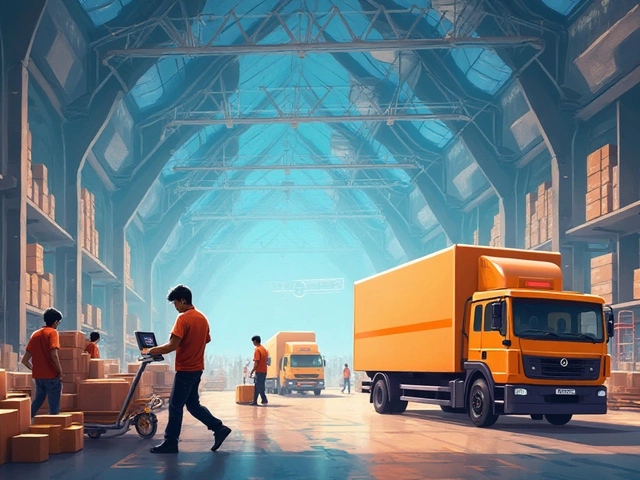Warehouse Technology ROI Calculator
Evaluate Your Warehouse Automation Investment
Estimate potential return on investment for warehouse automation technologies based on your facility characteristics and operational metrics.
Select Technologies to Evaluate
Investment Results
Total Potential ROI
Technology Breakdown
Key Takeaways
- Robotics and autonomous mobile robots are moving from pilot projects to full‑scale deployment.
- AI‑driven demand forecasting cuts stock‑outs by up to 30%.
- IoT sensors combined with edge computing give real‑time visibility of every pallet.
- Digital twins let managers test layout changes without stopping operations.
- Blockchain creates immutable audit trails, boosting compliance confidence.
Warehouses are the beating heart of modern supply chains, but they’re also under pressure to handle higher volumes, faster delivery windows, and tighter margins. The question on every logistics leader’s mind is: warehouse technology that will keep the beat going strong? Below we unpack the game‑changing tools that are reshaping storage, picking, and shipping in 2025 and beyond.
What Warehouse Technology means the collection of hardware, software, and data‑driven methods used to store, move, and track goods inside a distribution center looks like today
Ten years ago a warehouse manager’s toolbox consisted of barcode scanners, a WMS (Warehouse Management System), and a few forklifts. Today, every square foot is wired, every pallet speaks, and every robot knows its next aisle. The shift isn’t about adding gadgets; it’s about creating an interconnected ecosystem where data flows instantly, decisions are automated, and physical labor is amplified by machines.
Robotics covers mechanical devices that perform repetitive tasks such as picking, packing, and transporting items without human intervention and automation
Robots have graduated from fixed gantry arms on assembly lines to mobile units that weave through narrow aisles. The most common players are:
- Autonomous Mobile Robots (AMRs) are self‑navigating platforms that move shelves or totes to workers, cutting travel time by up to 50%.
- Collaborative robots, or “cobots”, that work side‑by‑side with humans for heavy lifting.
- High‑speed sorters that route parcels at rates exceeding 1,200 items per minute.
Real‑world example: a UK e‑commerce retailer deployed 120 AMRs across three facilities, reporting a 22% boost in order‑throughput and a 15% reduction in labor overtime during peak season.
Artificial Intelligence refers to machine‑learning algorithms that analyze data to predict demand, optimise routes, and automate decision‑making in warehousing
AI’s role is shifting from advisory to operational. Predictive analytics now feed directly into pick‑path generation, while reinforcement learning constantly tweaks robot speed for safety and efficiency.
Key AI‑driven use cases:
- Demand forecasting that adjusts safety stock in real time, reducing excess inventory by 18%.
- Dynamic slotting - the system moves fast‑moving SKUs to the front of the aisle during spikes.
- Vision‑based quality inspection, catching damaged goods before they leave the dock.
One North‑American fulfillment center used AI to balance its pick‑waves, cutting average pick time from 12 seconds to 8 seconds without adding staff.
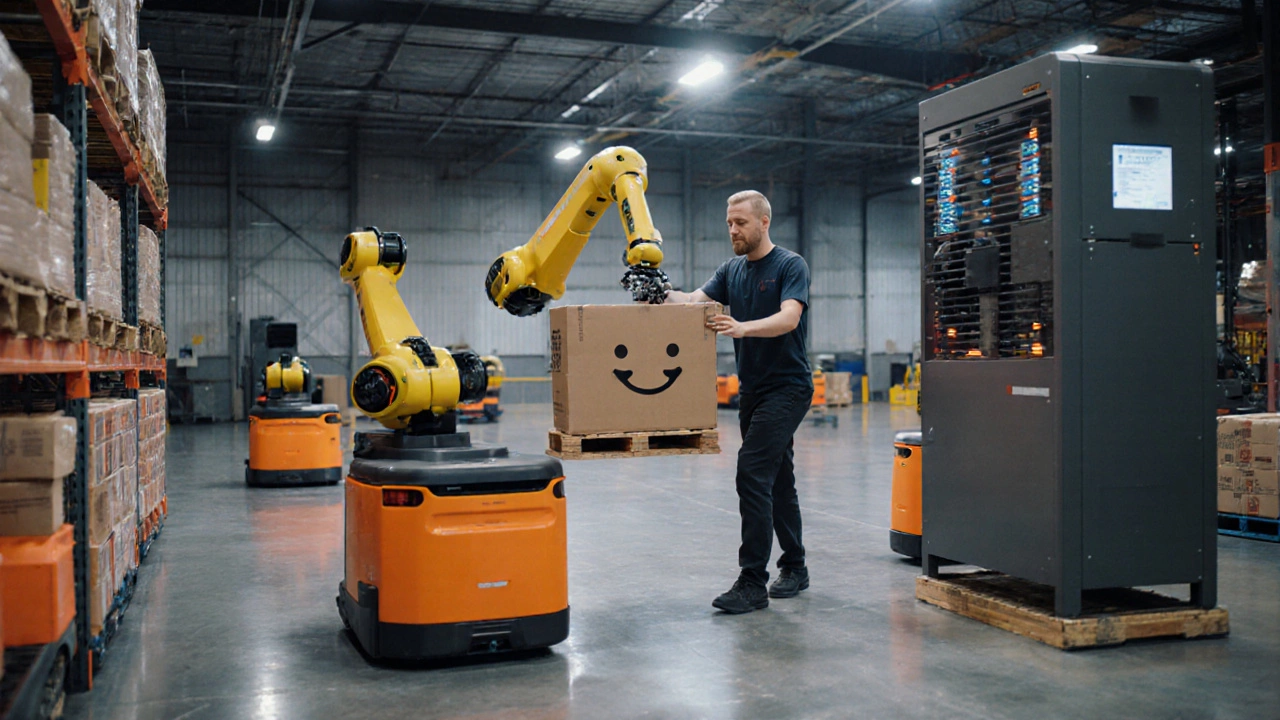
Internet of Things is a network of sensors, tags, and actuators that collect and transmit data about physical assets and Edge Computing processes IoT data locally on devices or gateways, reducing latency and bandwidth use
IoT sensors now sit on every pallet, shelf, and dock door. Temperature, humidity, vibration, and location data flow to edge nodes that trigger alerts instantly.
Benefits include:
- Real‑time inventory visibility - managers can locate a specific SKU within seconds.
- Predictive maintenance for conveyor belts before a breakdown occurs.
- Energy optimisation by dimming lights and adjusting HVAC based on occupancy.
Because processing happens at the edge, a warehouse in a remote industrial park can run AI models locally without relying on a slow internet connection.
Digital Twin is a virtual replica of a physical warehouse that mirrors operations in real time, enabling simulation and scenario testing
Digital twins let planners experiment with layout changes, robot pathways, or new SKU introductions without moving a single pallet. The twin ingests data from IoT devices, WMS logs, and ERP systems, providing a live dashboard of throughput, congestion, and labor utilisation.
Case study: a European logistics hub used a digital twin to model the impact of adding a new high‑bay storage zone. The simulation predicted a 9% increase in capacity, which was later confirmed after construction.
Drone Delivery covers small unmanned aerial vehicles used for intra‑warehouse inventory checks and short‑range outbound shipments
Drones aren’t just for city‑wide deliveries; inside large distribution centers they fly up to 30 meters to scan barcodes on high shelves, generating inventory counts in minutes instead of hours.
For outbound parcels, lightweight drones can shuttle packages from the dock to a nearby micro‑fulfilment hub, cutting last‑meter travel time during urban peak periods.
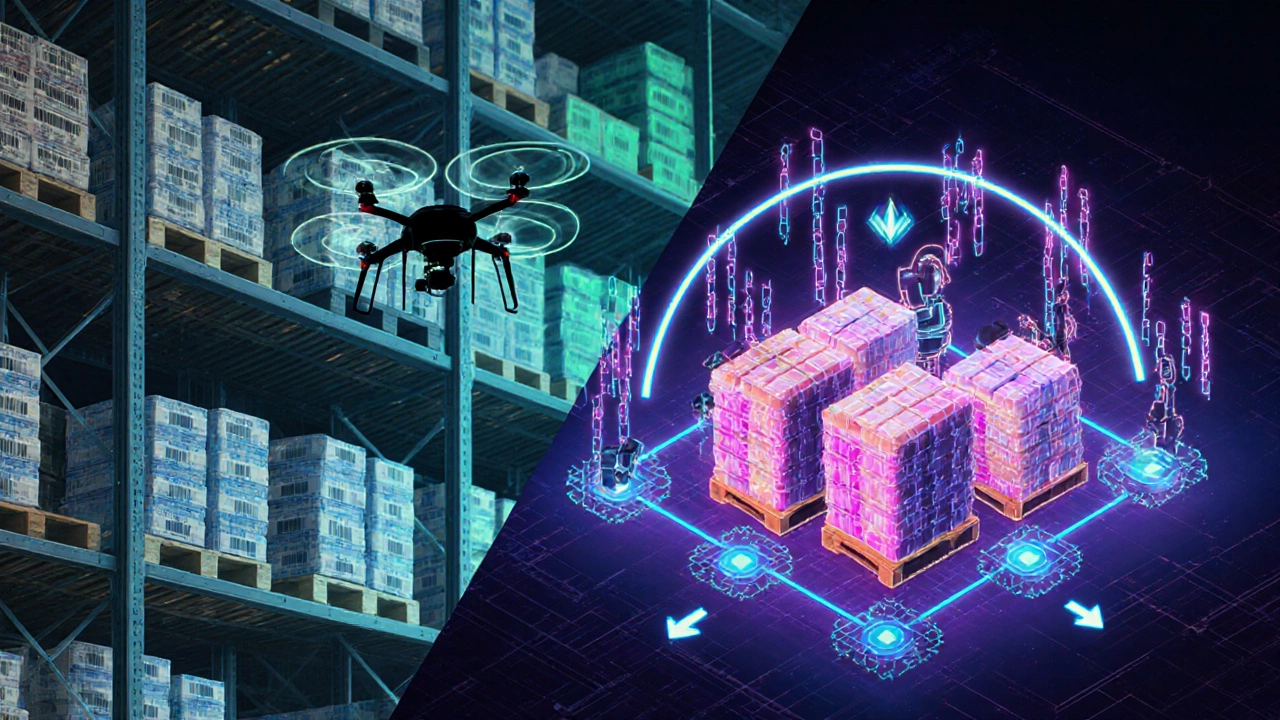
Blockchain provides a decentralized ledger that records every transaction, movement, and hand‑off within the supply chain
Transparency is a top concern for regulated industries like food and pharma. By hashing each pallet’s identifier on a blockchain, stakeholders can verify provenance, temperature compliance, and custody without trusting a single party.
Implementation doesn’t require a full public chain; many firms use permissioned ledgers that integrate with existing ERP systems.
Choosing the Right Mix - A Comparison
| Technology | Primary Benefit | Typical ROI Period | Implementation Complexity |
|---|---|---|---|
| Robotics / AMRs | Reduced travel time & labor | 12‑18 months | High - requires floor redesign |
| Drones (inventory) | Fast cycle counts | 6‑9 months | Medium - safety regs |
| AI‑driven WMS | Optimised pick paths | 9‑12 months | Medium - data integration |
| Digital Twin | Scenario testing | 18‑24 months | High - requires IoT foundation |
| Blockchain | Auditability & trust | 24‑36 months | Medium - stakeholder onboarding |
Implementation Checklist
- Map current processes and identify bottlenecks.
- Choose a scalable WMS that supports AI plugins.
- Start with a pilot AMR fleet in a low‑risk zone.
- Deploy IoT sensors on high‑value SKUs first.
- Build a digital twin using existing BIM models.
- Establish data governance policies before adding blockchain.
- Train staff on human‑robot collaboration safety.
- Measure KPIs weekly - pick‑rate, inventory accuracy, labor cost.
Common Pitfalls & Pro Tips
Pitfall: Over‑automating before data is clean. Tip: Cleanse legacy inventory data first; AI models only work on good data.
Pitfall: Treating robots as a silver bullet. Tip: Use them to augment, not replace, skilled pickers for complex orders.
Pitfall: Ignoring change‑management. Tip: Run joint workshops with floor staff to co‑design robot pathways.
Pitfall: Deploying blockchain without clear governance. Tip: Define who can write/read the ledger and tie it to existing compliance procedures.
What are the first steps to introduce robotics into an existing warehouse?
Start with a pilot zone, map the current flow, and select AMRs that can navigate the existing layout. Run a short‑term trial, collect performance data, and iterate before scaling across the whole facility.
How does AI improve demand forecasting compared to traditional methods?
AI ingests millions of data points-sales history, weather, social trends-and continuously trains models. This dynamic approach captures seasonality shifts faster than static statistical formulas, yielding up to 30% fewer stock‑outs.
Can small‑to‑mid sized warehouses afford digital twins?
Yes. Cloud‑based twin platforms now offer subscription pricing that scales with data volume, allowing even a 10,000‑sq‑ft facility to start with a basic simulation and expand as ROI proves itself.
What safety measures are needed for indoor drone operations?
Implement geofencing, equip drones with obstacle‑avoidance sensors, and require operators to wear eye protection. Regularly audit flight logs to ensure compliance with local aviation rules.
Is blockchain really necessary for warehouse traceability?
For high‑value or regulated goods, blockchain provides an immutable audit trail that satisfies auditors and regulators. For lower‑risk items, a traditional database with proper backups may be sufficient.
